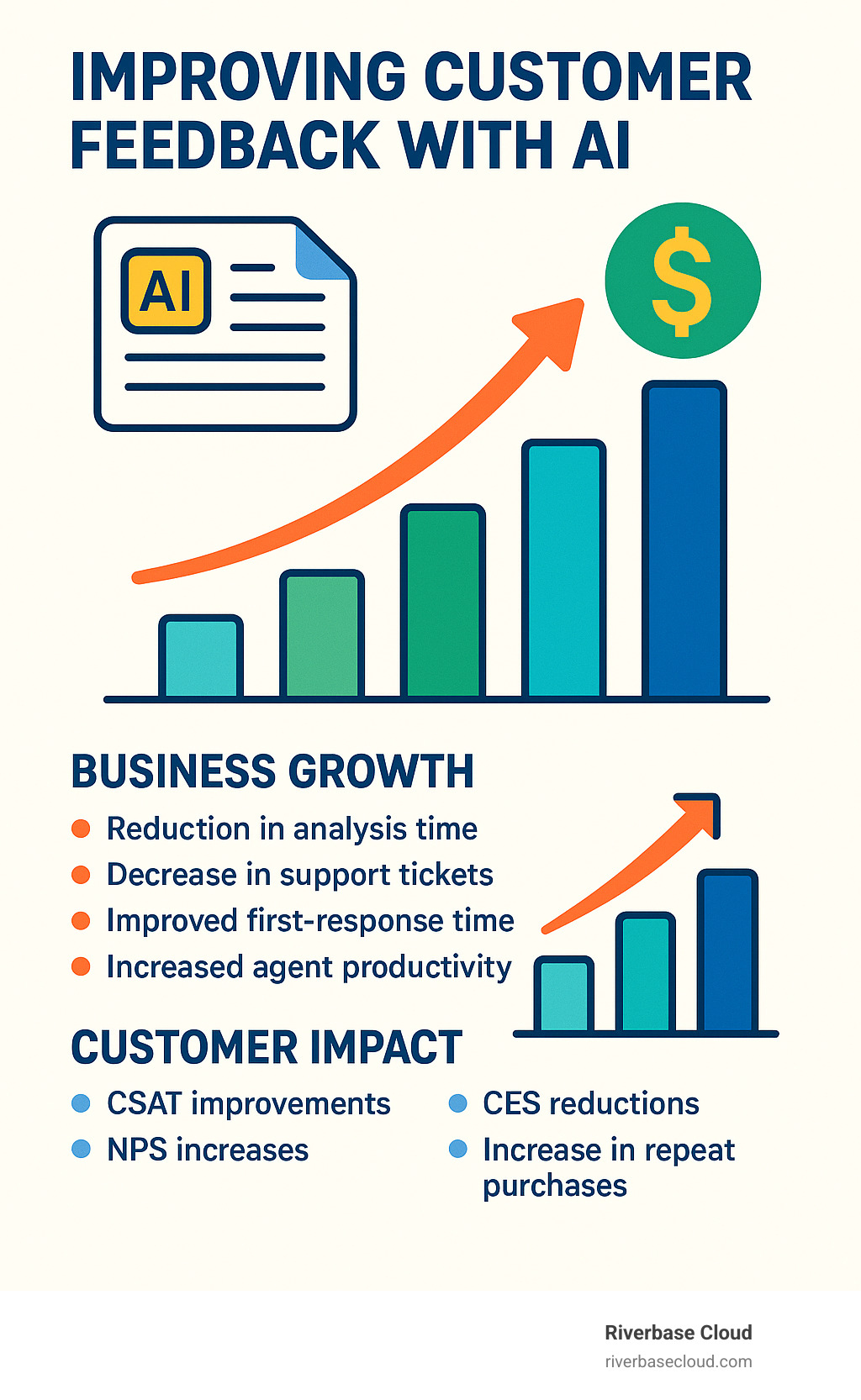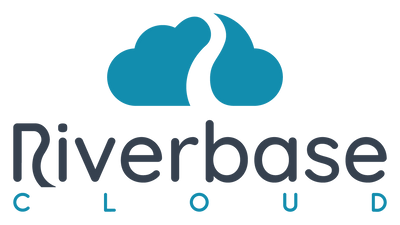Revolutionizing Customer Insights with AI
Improving customer feedback with AI is changing how businesses understand and respond to their customers. For companies seeking to improve their feedback processes, here's a quick overview of how AI can help:
- Automated Analysis - AI can process thousands of feedback points in seconds
- Sentiment Detection - Instantly identify positive, negative, or neutral emotions
- Real-time Insights - Get actionable information without delay
- Pattern Recognition - Spot trends humans might miss
- Personalized Response - Tailor follow-ups based on customer history
In today's competitive marketplace, customer feedback is the lifeblood of business growth. Yet many companies struggle to efficiently collect, analyze, and act on the mountains of comments, reviews, and survey responses they receive.
This is where artificial intelligence steps in to revolutionize the entire feedback process.
As one study found, "65% of CX leaders see AI as a strategic necessity that has made previous CX operations obsolete." Companies implementing AI-powered feedback analysis have seen impressive results, including 9.44% increases in customer satisfaction scores and 50% reductions in support tickets.
I'm Gary Gilkison, founder of Riverbase Cloud, where I've helped numerous businesses implement AI-powered solutions for improving customer feedback with AI, changing how they collect, analyze, and respond to customer insights.
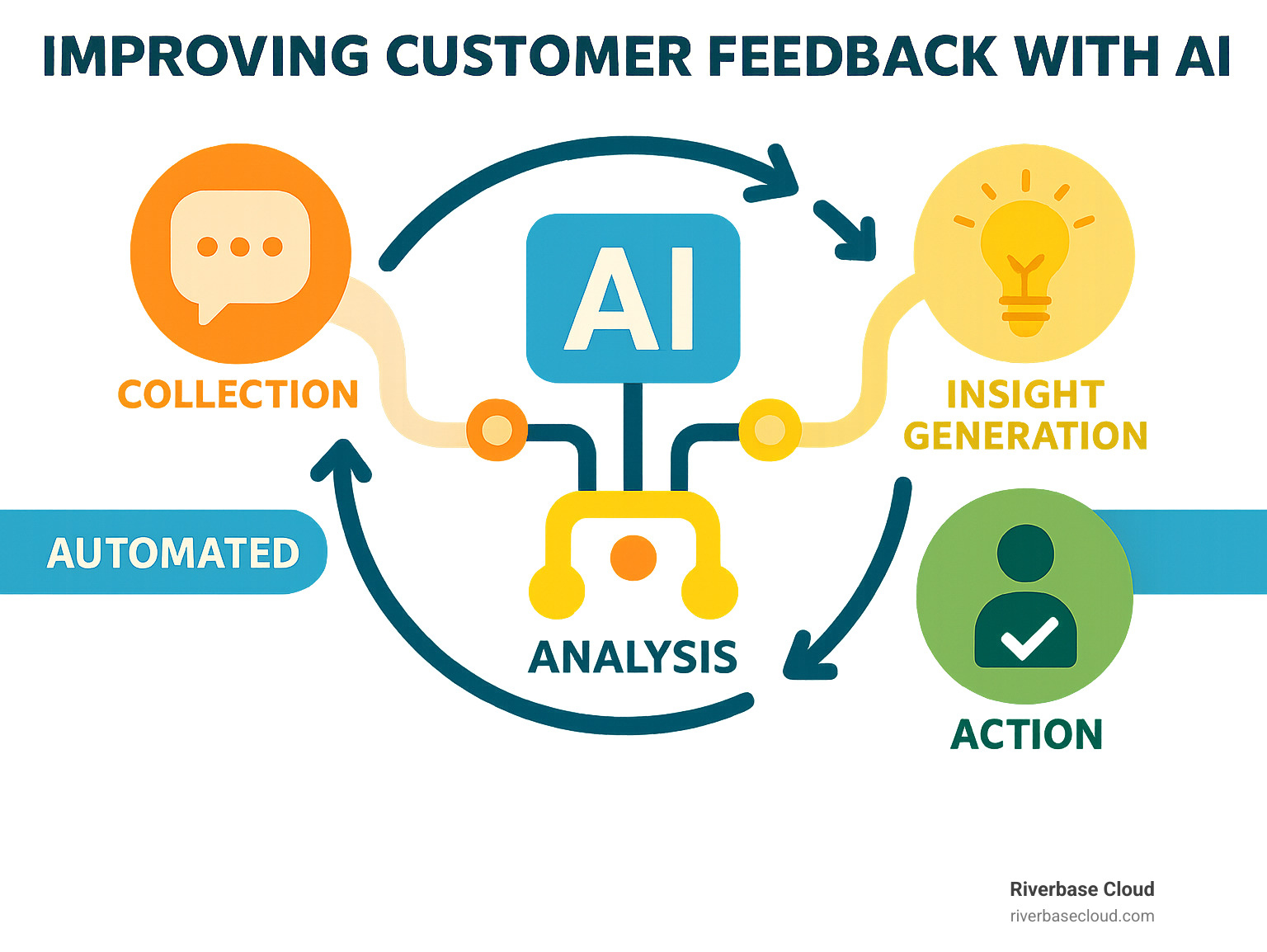
AI-Powered Feedback Analysis: What, Why, and Core Technologies
Ever wondered how companies manage to make sense of thousands of customer comments? Improving customer feedback with AI transforms this once-overwhelming task into a streamlined process that uncovers golden insights.
AI customer feedback analysis uses artificial intelligence to collect, process, and extract valuable insights from what your customers are saying across all channels. This Voice-of-Customer (VoC) approach isn't just about gathering more feedback—it's about understanding it deeply and acting on it quickly.
At its heart, this technology uses Natural Language Processing (NLP) to understand human language in all its messy, complicated glory. As one expert puts it, "You don't need to be a mind reader to understand customers—you just need AI."
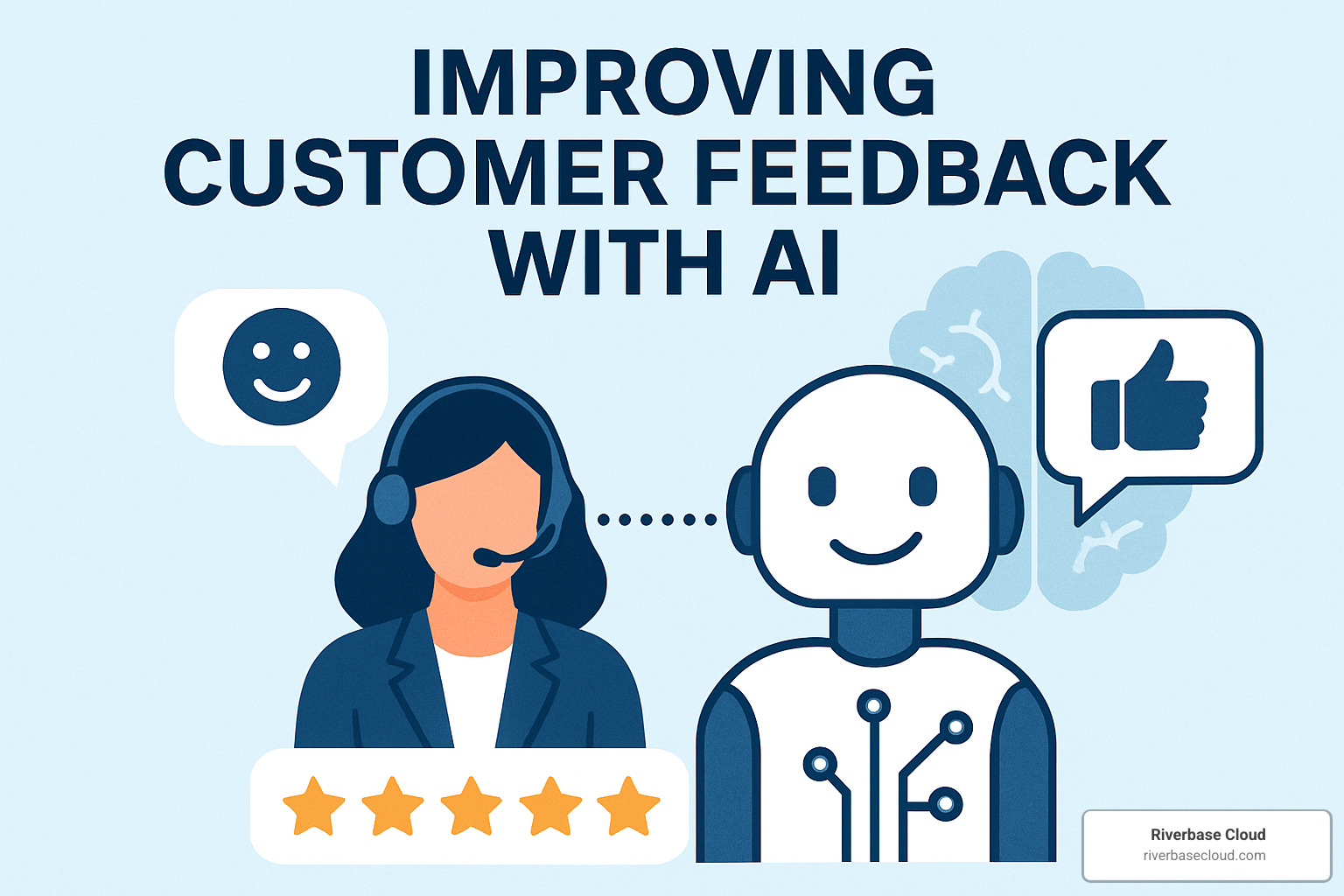
Modern AI doesn't just count keywords—it truly understands what customers mean. Sentiment analysis automatically detects whether feedback is positive, negative, or somewhere in between. Predictive analytics spots patterns that hint at future customer behavior. Chatbots gather real-time feedback during conversations, while sophisticated Large Language Models can summarize and draw insights from even the most unstructured feedback.
How AI beats traditional feedback methods
Traditional feedback methods simply can't keep up with today's data volumes.
When it comes to speed, AI analyzes thousands of comments in seconds, not days or weeks. There's virtually no limit to the scale of feedback AI can process—whether you have 100 reviews or 100,000.
AI maintains consistent accuracy without getting tired or distracted and excels at pattern recognition, finding subtle connections across massive datasets that human analysts would likely miss.
I recently spoke with a retail client who used AI to analyze over 10,000 customer reviews in just a few hours—a task their team estimated would have taken weeks to do manually. And they didn't just save time—they found feedback patterns they'd never noticed before.
The sweet spot isn't AI-only but rather a "human-in-the-loop" approach. Let AI handle the heavy data lifting while human experts provide context, creativity, and emotional intelligence.
Key tech stack for feedback intelligence
Building an effective AI feedback system requires integrating several specialized components:
Sentiment analysis engines detect nuanced emotions like confusion, frustration, or delight, giving you a true emotional map of your customer experience.
Generative AI tools can summarize lengthy customer comments and suggest appropriate responses based on context, saving your team countless hours.
Intelligent triage systems automatically categorize and route feedback to the right teams based on content, urgency, and sentiment.
QA automation tools evaluate 100% of customer interactions against consistent criteria, eliminating sampling bias.
Interactive dashboards transform complex feedback data into visual insights that decision-makers can actually use.
The magic happens when these components work together in a seamless workflow—collecting feedback, analyzing it, and delivering insights to the right people at exactly the right time. Industry data shows that "28% of customer service experts use AI to collect and analyze customer feedback, making it the second most popular customer service use case for AI/automation."
Improving customer feedback with AI: Benefits & ROI
When businesses get improving customer feedback with AI right, the payoff is clear and compelling. This isn't just about fancy technology—it's about real results that matter to your bottom line.
Companies that adopt AI for feedback analysis are seeing remarkable returns on their investment. The operational efficiency alone is worth noting, with many businesses cutting manual review work by up to 80%. Instead of waiting days for insights, you get them in real-time, allowing you to address issues before they snowball.
Perhaps most impressive is what this means for customer happiness. Companies typically see their customer satisfaction scores jump by 9-10% after implementing AI feedback systems. When customers feel heard and valued, they stick around longer, which directly translates to reduced churn rates.

The financial impact is equally compelling. Many businesses report support ticket reductions of 40-50%, freeing up valuable staff time while cutting costs. And in today's market, the ability to deliver personalized responses based on a customer's history without exhausting your team is priceless.
According to the Zendesk AI-Powered CX Trends Report 2024, these aren't isolated success stories—they're becoming the new standard for companies that take customer experience seriously.
"Improving customer feedback with AI" starts with measurable wins
The beauty of AI-powered feedback systems is that you don't have to wait years to see results. The initial benefits often appear immediately and can be precisely measured.
Take Unity, the popular game development platform. After implementing AI-powered feedback analysis, they successfully deflected almost 8,000 support tickets—thousands of issues resolved without human intervention, freeing up their team to focus on more complex customer needs.
Esusu, a financial technology company, saw their first response time drop by 64% across an average of 10,000 monthly tickets after adopting AI feedback tools.
Net Promoter Score increases of 5-10 points within just months of implementation are common across industries. Real-time flagging of negative sentiment has become a "game-changer" for identifying and improving underperforming aspects of service.
"Improving customer feedback with AI" drives loyalty and lifetime value
While the immediate operational improvements are impressive, the long-term value of improving customer feedback with AI is where the magic really happens.
Compass, a real estate technology company, achieved a 65% one-touch resolution rate and a stellar 98% customer satisfaction score after implementing AI feedback analysis. One-touch resolution means happy customers who get their issues solved the first time, without being bounced between departments.
AI feedback systems also enable proactive service—identifying emerging issues before they become widespread problems. This means you can fix things before most customers ever experience them.
The predictive capabilities of AI can analyze feedback patterns to suggest personalized products or services that align with individual customer preferences, creating opportunities for additional value while genuinely helping your customers.
As we've seen at Riverbase Cloud, AI and Business Growth: A Match Made in Heaven when it comes to changing customer feedback into business value.
From Data to Action: Step-by-Step Implementation Guide
Turning customer feedback into meaningful action requires a thoughtful approach that connects all your feedback channels into one powerful system.
Think about all the places your customers are talking about you right now. Your feedback is likely scattered across surveys, social media comments, Google reviews, support tickets, call recordings, website forms, and app ratings. The secret to success? Bringing all these voices into one place.
"Centralizing feedback ensures one universal data source, improves cross-team collaboration, enables a consistent taxonomy, and simplifies management of growing data volumes." When everyone in your company sees the same customer truth, magic happens.
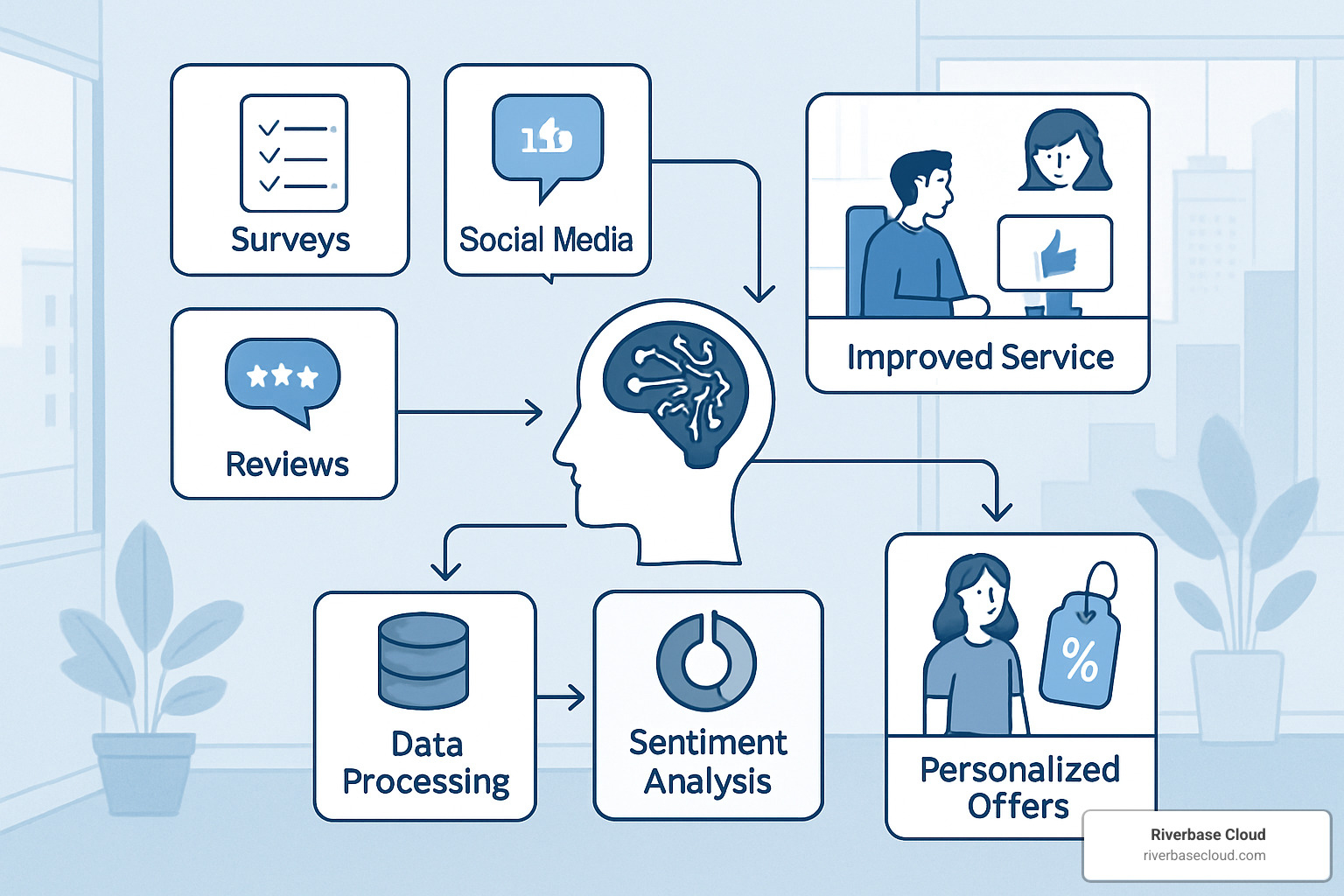
1. Collect: AI-powered listening posts
Gone are the days of boring, static surveys that customers dread completing. Today's AI-powered collection methods make sharing feedback feel more like a conversation than a chore.
AI Surveys adapt as your customers respond, asking follow-up questions based on their previous answers. This creates a more natural, engaging experience that feels personalized.
Intelligent Chatbots proactively ask for insights at perfect moments during customer interactions. It's no wonder that "51% of consumers say they prefer interacting with bots when they want immediate service."
Even when customers aren't explicitly telling you what they think, IoT Signals from connected devices can reveal valuable insights through usage patterns. Meanwhile, Voice Analytics can analyze customer calls to detect not just what people say, but how they feel when saying it.
2. Analyze: Real-time insight engines
This is where AI truly shines – turning mountains of raw feedback into golden insights you can actually use.
Topic Modeling automatically spots common themes across thousands of comments, helping you identify what matters most to customers. Emotion Detection goes deeper than just positive or negative, revealing specific feelings like confusion, frustration, or delight.
With Auto-Tagging, your feedback gets consistently categorized without human bias, making trend analysis much more reliable. Meanwhile, Anomaly Detection flags unusual patterns that might signal emerging problems before they become crises.
One fashion retailer used AI-powered sentiment analysis to achieve a remarkable 9.44% increase in customer satisfaction scores while cutting support tickets in half – all by identifying and fixing specific pain points in their customer journey.
3. Act: Automated & human follow-up
The best insights mean nothing without action. Modern AI feedback systems don't just analyze – they initiate:
Intelligent Routing automatically sends feedback to the right team based on content and urgency. Alert Systems notify managers about emerging issues that need immediate attention. Task Creation generates specific action items in your project management tools, and Closed-Loop Reporting tracks resolution status and communicates outcomes back to customers.
The difference between manual and AI-driven feedback systems is striking:
| Feedback Process Step | Manual Process | AI-Assisted Process |
|---|---|---|
| Initial review | 24-48 hours | Instant |
| Categorization | 1-2 hours per 100 items | Seconds for thousands |
| Priority assessment | Subjective, inconsistent | Objective, consistent |
| Team assignment | Hours to days | Immediate |
| Response time | 2-3 days average | Same day or hours |
This isn't just about efficiency – it's about fundamentally changing how customers experience your brand. When issues get resolved quickly, satisfaction soars. As one study found, "34% of consumers expect responses within 2-3 days, 22% within a week, and 11% expect same-day responses."
Tackling Challenges & Blending Human Expertise
While AI can transform your feedback processes, it comes with its own set of challenges that smart businesses need to steer:
AI sometimes misses cultural references or industry jargon that your customers use. It might struggle with sarcasm or humor. And without careful design, AI systems can inherit biases from their training data.
There's also the concern of privacy – handling sensitive customer information requires strong safeguards. And connecting new AI tools with your existing systems can sometimes be challenging.
Perhaps the biggest challenge? People. Your team may resist new AI tools without proper training and support. Change is hard, even when it's for the better.
As we've explored in our guide on AI in Action: A How-To Guide for Digital Marketers, these challenges aren't roadblocks – they're just part of the journey.

"Improving customer feedback with AI" without losing the human touch
The magic happens when you combine AI's number-crunching superpowers with human intelligence. Think of it as a partnership, not a replacement:
Have your experts review AI-generated insights to add context and catch misinterpretations. After all, AI might flag a comment as negative when a human would recognize it as constructive criticism. Human empathy remains essential – train your teams to respond with emotional intelligence where AI falls short.
Creative problem-solving is still uniquely human. Use AI to identify patterns, then let your people develop novel solutions to the issues AI uncovers. And when unusual or complex feedback comes in, direct those edge cases to your human specialists who can think outside the box.
"Human judgment remains essential despite AI's speed and scale, so the ideal solution merges both." This hybrid approach lets AI handle what it does best—processing mountains of data quickly—while preserving the uniquely human elements that build genuine customer relationships.
Best practices for successful rollout
After helping numerous businesses implement AI feedback systems at Riverbase Cloud, we've learned what works:
Start with data hygiene – ensure your training data is diverse, representative, and as bias-free as possible. Then begin with a pilot project – test your implementation in one area before rolling it out everywhere.
Set SMART goals that are Specific, Measurable, Achievable, Relevant, and Time-bound. This helps everyone understand what success looks like.
AI needs ongoing education too. Continuously train your models with new data to improve accuracy over time. And establish a clear governance framework for data usage and privacy.
Build cross-functional teams with representatives from customer service, product, marketing, and IT – everyone brings a valuable perspective. And finally, apply the feedback principle to your feedback system itself: continuously evaluate and improve your AI tools.
Future Trends & Real-World Success Stories
The world of AI-powered customer feedback is evolving at lightning speed, with exciting innovations just around the corner.
Predictive CX is perhaps the most exciting development – imagine addressing customer needs before they even express them. Instead of waiting for complaints, businesses will proactively solve issues. Alongside this, multimodal feedback analysis is gaining traction, looking beyond text to analyze voice tones, facial expressions, and even customer behaviors.
We're also seeing the rise of hyper-personalization, where feedback experiences are custom to each customer's unique history and preferences. Meanwhile, autonomous agents are becoming sophisticated enough to independently resolve common issues identified in feedback without human intervention.
According to a Harvard Business Review analysis, these innovations will fundamentally reshape customer experience management in the coming years.
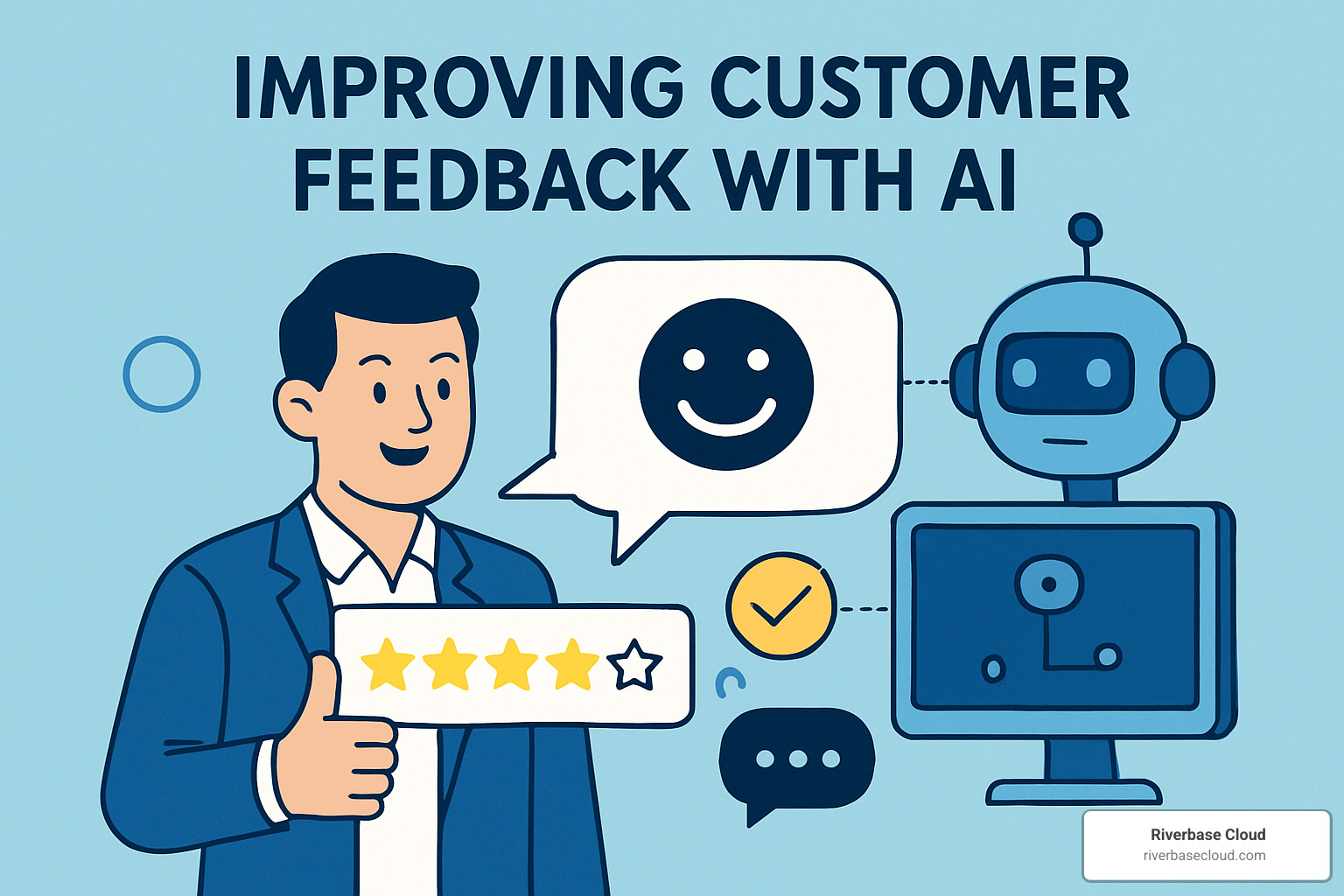
Case studies driving results
Real businesses are already seeing remarkable results from improving customer feedback with AI. These aren't just marginal gains – they're transformative outcomes that directly impact the bottom line.
Fashion retailer Motel Rocks turned to AI-powered sentiment analysis to understand customer pain points and saw their customer satisfaction scores jump by 9.44% while support tickets dropped by half.
Game development platform Unity managed to deflect almost 8,000 support tickets after implementing AI feedback tools, while also speeding up their first response time by an impressive 83%.
For fintech startup Esusu, the results were equally impressive. Their first reply time dropped by 64%, and resolution time decreased by 34% across 10,000 monthly tickets after adopting AI feedback tools.
Real estate technology company Compass achieved a 9% increase in resolution rate, 65% one-touch resolution rate, and a nearly perfect 98% customer satisfaction score after implementing AI-driven feedback analysis.
Even coffee giant Starbucks has acceptd this technology with their Deep Brew platform, which analyzes customer feedback to personalize recommendations and optimize store operations.
What's next for SMBs
While large enterprises have led the AI feedback revolution, small and medium-sized businesses are now getting their chance to shine:
No-code AI platforms are making sophisticated feedback analysis accessible to business owners without technical backgrounds. You no longer need a data science team to gain powerful customer insights.
Vertical-specific models pre-trained for particular industries like healthcare, retail, or hospitality are eliminating the need for extensive customization.
The landscape is also being shaped by regulatory evolution, with new guidelines emerging for responsible AI use in customer data analysis.
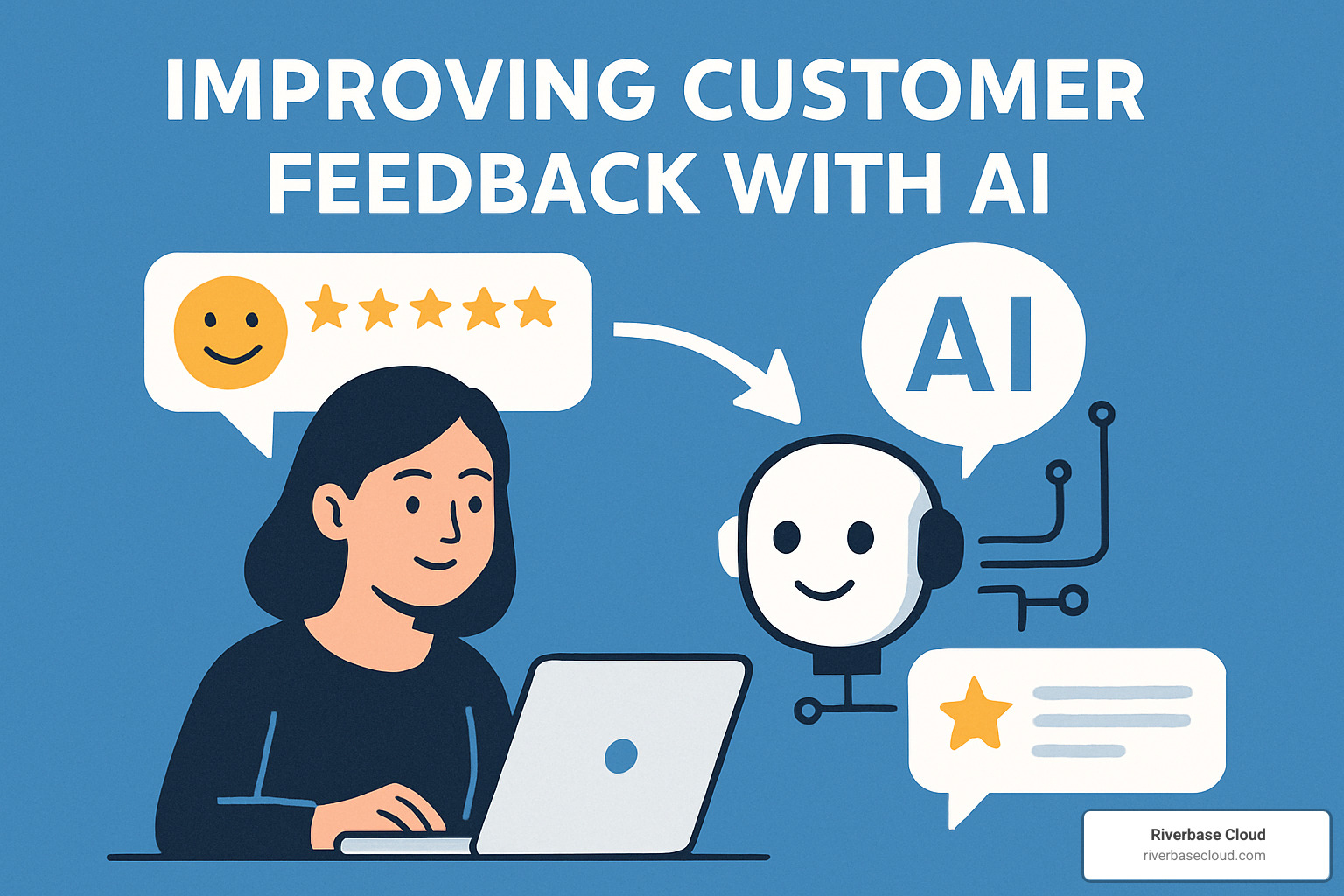
At Riverbase Cloud, we're particularly excited about making these powerful capabilities accessible to SMBs through our Managed-AI solutions. We've seen how combining cutting-edge AI with thoughtful human expertise creates the perfect approach for businesses of all sizes – not just the giants with unlimited resources.
Frequently Asked Questions about AI-Driven Feedback
How accurate is AI sentiment analysis?
Modern AI sentiment analysis systems typically hit the 85-95% accuracy mark when properly implemented.
Think of it like weather forecasting – generally reliable, but with some limitations. Several factors affect how well your AI will perform:
The accuracy depends heavily on the language and context you're working with. English and other widely-spoken languages tend to perform better than less common ones. Your AI might struggle with industry jargon unless it's specifically trained for your field.
The quality of your training data makes an enormous difference too. Where AI still stumbles a bit is with nuance. Sarcasm, cultural references, and idioms can trip up even sophisticated systems.
That's why we recommend a hybrid approach at Riverbase Cloud – let AI handle the heavy lifting of initial classification, but keep humans in the loop for those tricky edge cases or particularly important feedback items.
What data do I need to get started?
Starting your AI feedback journey doesn't require a mountain of data, but quality and variety matter:
Historical feedback forms the foundation – aim for at least 3-6 months of previous customer comments, reviews, and survey responses.
You'll also want to include customer interaction records like support tickets, chat logs, and call transcripts. These show how customers communicate with your business in real-time.
Don't forget about response data that shows how issues were resolved and whether customers were satisfied with the outcomes.
Business context matters too – your AI needs to understand your products, services, and industry terminology to make sense of specific feedback.
"Ensure high-quality data sources (CSAT surveys, verified comments, support tickets)" to maximize accuracy. The cleaner and more consistent your data, the better your results will be.
How do I measure ROI on AI feedback tools?
Measuring the return on your AI investment should track both operational improvements and customer impact.
On the operational side, look for time savings in analysis, decreases in support ticket volume, improved response times, and increased agent productivity.
For customer impact, track improvements in your Customer Satisfaction Score (CSAT), increases in Net Promoter Score (NPS), and reductions in Customer Effort Score (CES). The real money metrics are retention rate improvements and increases in repeat purchases.
Most businesses we work with at Riverbase Cloud see ROI within 3-6 months of implementation. Typically, you'll notice operational efficiencies first, followed by those longer-term customer metric improvements.
One company reported, "AI-powered sentiment analysis achieved a 9.44 percent increase in CSAT and a 50 percent ticket reduction" within their first year – translating directly to bottom-line growth through increased customer loyalty and reduced service costs.
Conclusion
Improving customer feedback with AI isn't just another tech trend—it's a game-changer for businesses wanting to truly understand their customers. When done right, AI transforms how you collect, analyze, and act on feedback, letting you listen to thousands of customer voices at once without missing a beat.
The results speak for themselves. Faster responses. Higher satisfaction scores. Lower support costs. Deeper insights. Companies embracing AI feedback tools are seeing real improvements that matter—like Unity cutting response times by 83% or Motel Rocks boosting customer satisfaction by nearly 10%.
At Riverbase Cloud, we're genuinely excited about making these powerful tools accessible to small and medium-sized businesses. We know that the magic happens when cutting-edge AI works alongside human expertise—combining the efficiency of technology with the creativity and empathy that only humans can provide.
Our Managed-AI LOCAL solution is perfect for businesses looking to strengthen their local presence through better customer feedback. We analyze reviews across platforms like Google Business Profile to help you spot improvement opportunities and build a stronger local reputation that attracts more customers.
Ready to transform how your business listens to customers? Learn more about our Google Business Profile optimization services and find how AI-powered feedback analysis can fuel your business growth.
The future of customer experience is already here—and it starts with truly hearing what your customers are trying to tell you.
